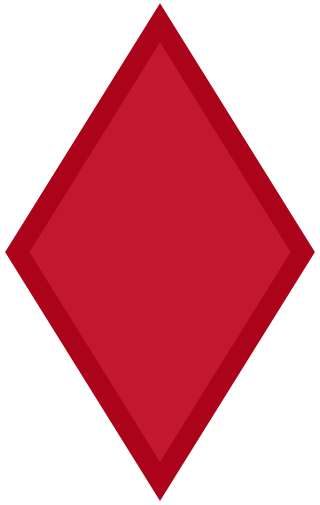
The 5th Infantry Division (Mechanized)—nicknamed the "Red Diamond", or the "Red Devils" —was an infantry division of the United States Army that served in World War I, World War II and the Vietnam War, and with NATO and the U.S. Army III Corps. It was inactivated on 24 November 1992 and reflagged as the 2nd Armored Division.

The 97th Infantry Division was a unit of the United States Army in World War I and World War II. Nicknamed the "Trident division" because of its shoulder patch, a vertical trident in white on a blue background, it was originally trained in amphibious assaults as preparation for deployment in the Pacific Theater. It was deployed to Europe in 1944 when casualties from the Battle of the Bulge needed to be replaced.

The brigade combat team (BCT) is the basic deployable unit of maneuver in the U.S. Army. A brigade combat team consists of one combat arms branch maneuver brigade, and its assigned support and fire units. A brigade is normally commanded by a colonel (O-6) although in some cases a brigadier general (O-7) may assume command. A brigade combat team contains combat support and combat service support units necessary to sustain its operations. BCTs contain organic artillery training and support, received from the parent division artillery (DIVARTY). There are three types of brigade combat teams: infantry, Stryker, and armored.

The 172nd Infantry Brigade was a light infantry brigade of the United States Army stationed at Fort Wainwright, Alaska and later moved its headquarters to Grafenwöhr, Germany. An active duty independent brigade, it was part of V Corps and was one of five active-duty, separate, brigade combat teams in the U.S. Army before its most recent inactivation on 31 May 2013.

The 9th Cavalry Regiment is a parent cavalry regiment of the United States Army. Historically, it was one of the Army's four segregated African-American regiments and was part of what was known as the Buffalo Soldiers. The regiment saw combat during the Indian and Spanish–American Wars. During Westward Expansion, the regiment provided escort for the early western settlers and maintained peace on the American frontier.

The 2nd Cavalry Division was a cavalry division of the United States Army.
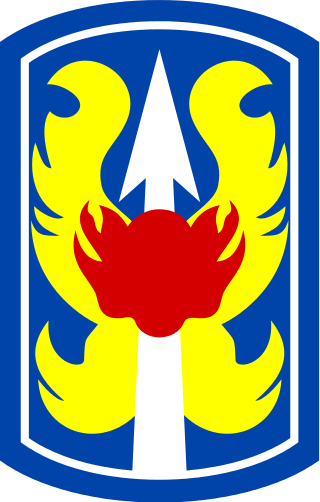
The 199th Infantry Brigade (Light) is a unit of the United States Army which served in the Army Reserve from 1921 to 1940, in the active army from 1966 to 1970 (serving in the Vietnam War), briefly in 1991–1992 at Fort Lewis, and from 2007 as an active army training formation at Fort Moore.

The 205th Infantry Brigade, was first formed as part of the United States Army Reserve's 103rd Division. It was active from 1921 to 1942 and then from 1963 through 1994, and then reformed in 2006.

The 193rd Infantry Brigade is a United States Army infantry brigade, which was originally constituted in the Army's organized reserves on 24 June 1922 as Headquarters and Headquarters Company, 193rd Infantry Brigade and assigned to the 97th Division. The brigade was converted and redesignated in February 1942 as the 97th Reconnaissance Troop, 97th Division. In February 1943, the Troop was ordered into active military service and organized at Camp Swift, Texas. It was reorganized and redesignated in October 1945 as the 97th Mechanized Cavalry Reconnaissance Troop.

The 171st Infantry Brigade was an infantry brigade of the United States Army based at Fort Jackson, South Carolina. With a long history of serving, the brigade saw action during both World War I and World War II before it was inactivated in 1946. During the Cold War the brigade was once again activated for a period of ten years until again inactivated in 1972. In 2007 the brigade was reactivated as a training support unit and inactivated on 10 June 2016.

The 191st Infantry Brigade was constituted on 24 June 1921 in the Organized Reserves as Headquarters and Headquarters Company, 191st Infantry Brigade, and assigned to the 96th Division. It was organized in December 1921 at Portland, Oregon, and redesignated on 23 March 1925 as Headquarters and Headquarters Company, 191st Brigade, then redesignated on 24 August 1936 as Headquarters and Headquarters Company, 191st Infantry Brigade. It was converted and redesignated on 6 April 1942 as the 96th Reconnaissance Troop, 96th Division. The Troop was ordered into active military service on 15 August 1942 and reorganized at Camp Adair, Oregon, as the 96th Cavalry Reconnaissance Troop, an element of the 96th Infantry Division. It was reorganized and redesignated on 16 August 1943 as the 96th Reconnaissance Troop, Mechanized, and then again reorganized and redesignated on 20 November 1945 as the 96th Mechanized Cavalry Reconnaissance Troop. Following World War II service with the 96th Infantry Division in the Pacific, it was inactivated on 3 February 1946 at Camp Anza, California.

The 157th Infantry Brigade is an active/reserve component (AC/RC) unit based at Camp Atterbury, Indiana. The unit is responsible for training selected United States Army Reserve and National Guard units. The unit was activated using the assets of the 5th Brigade, 87th Division. The brigade is a subordinate unit of First Army Division East.
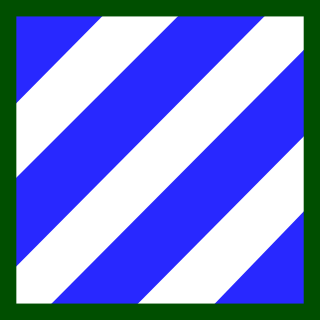
The 48th Infantry Brigade Combat Team is a modular infantry brigade of the Georgia Army National Guard. One of the oldest units in U.S. Army history, the lineage of the 48th Infantry Brigade can be traced back to 1825. It is one of few units in the US military that also saw service as a unit of the Confederate States of America during the American Civil War. Today, the 48th IBCT is part of the U.S. Army's "Associated Units" program where it's aligned under the 3rd Infantry Division, a combined arms combat maneuver unit of the Regular Army.

The 197th Infantry Brigade is an active Infantry brigade of the United States Army. The brigade was active as an Organized Reserve unit from 1921 to 1942, in the Regular Army from 1962 to 1991, and as a TRADOC training unit from 2007 to 2013. The brigade saw service in Operation Desert Storm with the 24th Infantry Division. On July 31, 2020, the brigade was activated as a training brigade in Fort Moore, Georgia, to serve the increased training needs of the army.

The 116th Cavalry Brigade Combat Team is the largest formation of the Idaho Army National Guard. It is headquartered at Gowen Field, Boise, Idaho. It has been reorganized into an Armored Brigade Combat Team (ABCT) but remains the only unit to be designated a "Cavalry Brigade Combat Team" by special appointment of the US Army. The 116th Cavalry Brigade Combat Team has units located throughout Idaho, Montana, Oregon, and Nevada. It was reorganized into a heavy armor brigade in 1989. Often referred to as the Snake River Brigade and formerly known as the 116th Armored Cavalry Regiment, the unit includes about 3,000 citizen-soldiers from Idaho.

The 34th Armor Regiment is an armored regiment of the United States Army formed in 1941.

The 107th Cavalry Regiment, Ohio Army National Guard, is a parent regiment under the U.S. Army Regimental System, with headquarters at Hamilton, Ohio. It currently consists of the 2nd Squadron, 107th Cavalry Regiment, part of the 37th Infantry Brigade Combat Team (BUCKEYE), Ohio National Guard located throughout southwest Ohio.
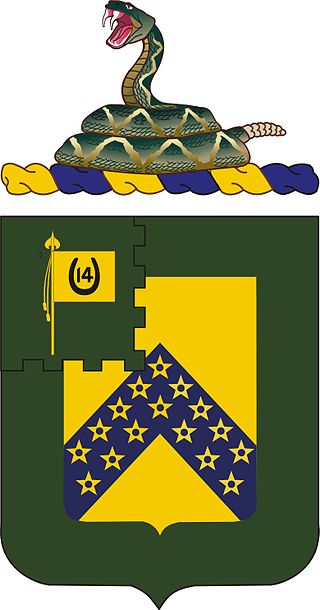
The 16th Cavalry Regiment is a Regiment of the United States Army first established in 1916. Currently the regiment includes three squadrons, all assigned to the 316th Cavalry Brigade, Fort Benning, Georgia, supporting the United States Army Armor School.

The 2nd Squadron, 107th Cavalry Regiment is a cavalry squadron of the 37th Infantry Brigade Combat Team and the Ohio National Guard located throughout southwest Ohio.
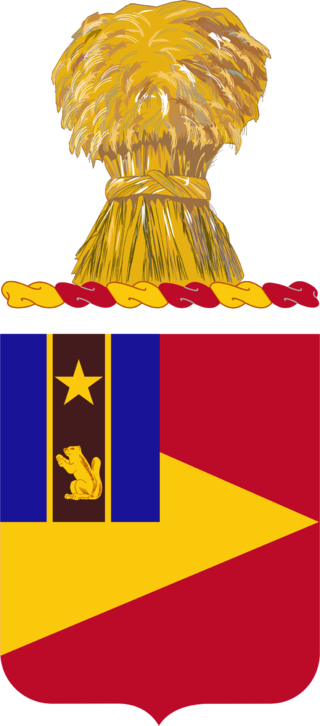
The 94th Cavalry Regiment is a United States Army cavalry regiment, represented in the Minnesota Army National Guard by 1st Squadron, 94th Cavalry, part of the 1st Armored Brigade Combat Team, 34th Infantry Division, stationed at Duluth.






















